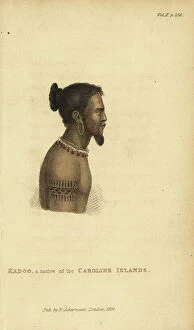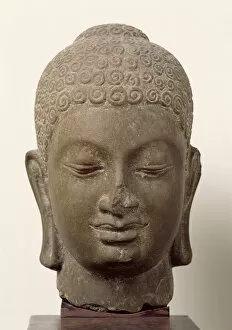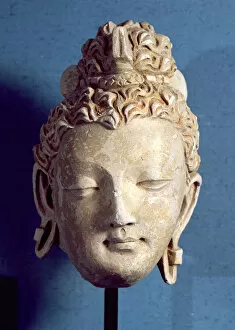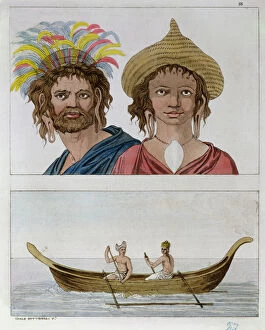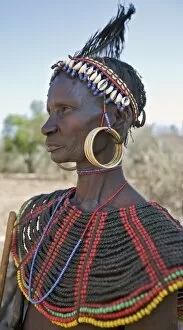Elongated Earlobes Collection
Elongated earlobes have been a prominent feature in various cultures and civilizations throughout history
For sale as Licensed Images
Choose your image, Select your licence and Download the media
Elongated earlobes have been a prominent feature in various cultures and civilizations throughout history. From ancient sculptures to tribal traditions, these stretched lobes hold significant cultural and aesthetic value. In the 6th-7th century sandstone sculpture of the Head of Buddha from Vat Romlok, Angkot Borei, one can observe the serene expression on his face along with elongated earlobes that symbolize wisdom and enlightenment. Similarly, in the Head of a giant Buddha made of bronze, this distinctive feature represents spiritual power and divine knowledge. Moving forward in time to the Qing dynasty, we encounter a cast gilt bronze Figure of Avolokitesvara Guanyin. This depiction showcases elongated earlobes as an attribute of compassion and mercy associated with this bodhisattva. Not limited to religious representations alone, they can also seen among indigenous tribes like the Pokot people. A striking old Pokot woman wearing traditional beaded ornaments proudly displays her married status through these stretched lobes. The Mursi tribe is another group known for their unique body modifications. A young Mursi girl at her mother's small entrance exhibits her culture's tradition by adorning large clay lip plates alongside elongated earlobes. Even Easter Island inhabitants have left us awe-inspired by their monumental stone statues called Moai. These colossal figures possess distinctively long ears carved into solid rock formations. From Greco-Buddhist style sculptures found in Hadda to tribal communities embracing their heritage through body adornments, elongated earlobes serve as visual markers connecting diverse cultures across time and geography. They remind us that beauty lies not only in physical appearance but also in celebrating our rich tapestry of human history and diversity.

